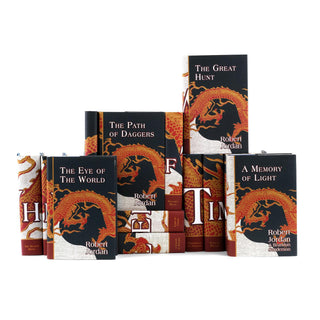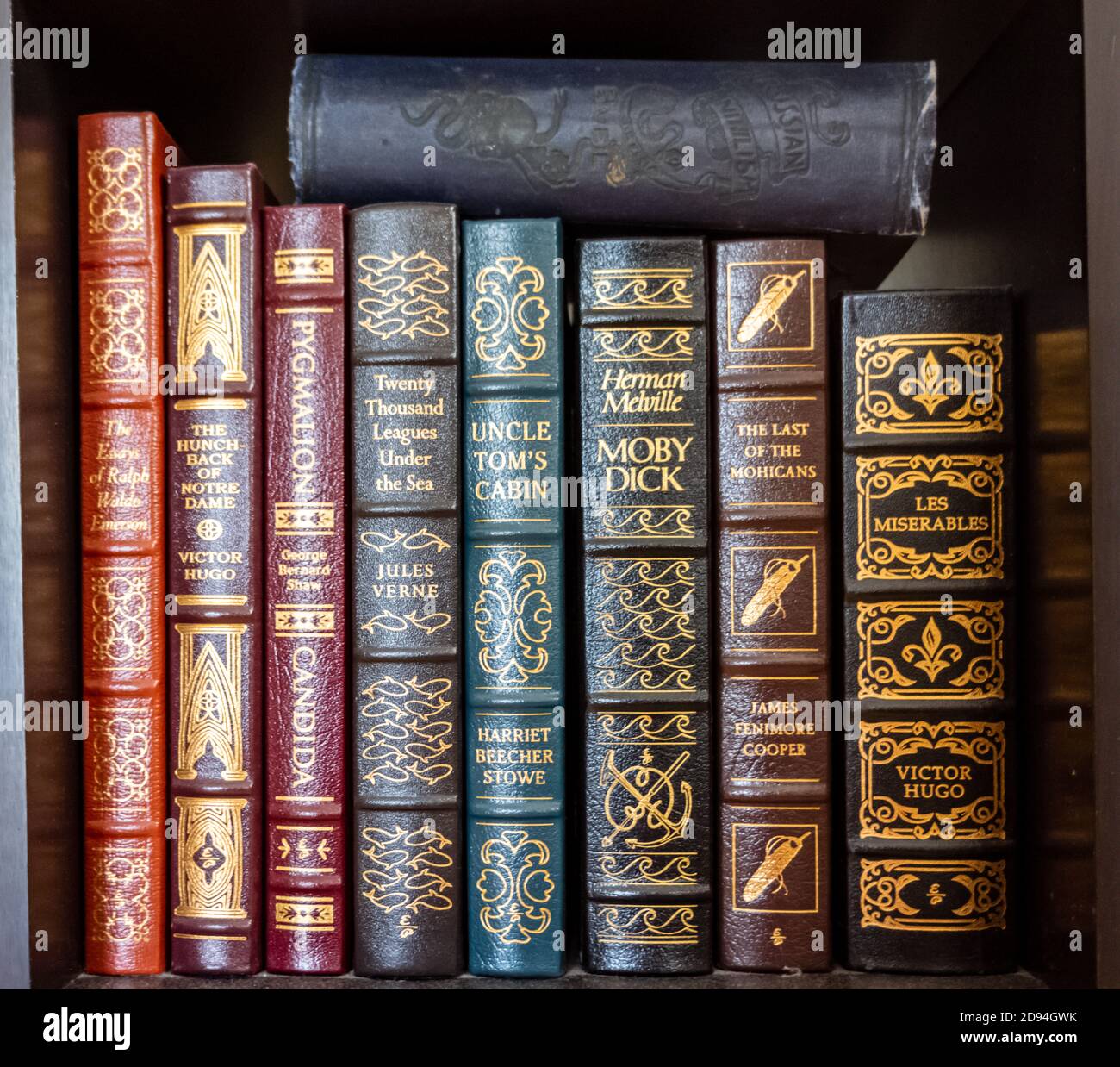Best Deals on Hardcover Books You Will Love
Best Deals on Hardcover Books You Will Love
Blog Article
A Comprehensive Overview to the Process of Hardbound Books Printing
When you begin the trip of hardbound book printing, comprehending the entire process is essential. As you navigate with binding and quality control, you'll locate that every choice impacts the publication's overall charm.
Understanding the Hardcover Book Structure
When you check out the globe of hardbound publications, you'll rapidly discover that their structure is intentional and unique. You'll discover a fabric or natural leather covering, which not only enhances visual appeals however additionally includes to the publication's longevity.
The message block itself contains numerous trademarks, or folded up sheets, stitched together for strength. You'll see that the back is reinforced, permitting a smooth lay-flat reading experience - hardcover books. Additionally, guide's weight typically shares a sense of quality and permanence
Hardbound publications commonly feature a dust coat, which functions as an advertising device while shielding the cover. Comprehending these components helps you value the workmanship behind hardcover publications and their unique allure in the literary globe.
Manuscript Prep Work and Modifying
Obtaining your manuscript all set for printing is important, and it starts with appropriate formatting guidelines. You'll require to understand the modifying procedure to refine your work and assure it resonates with readers. And also, grasping proofreading techniques can aid you capture those pesky errors prior to your publication mosts likely to publish.

Manuscript Formatting Standards
Proper manuscript format is important for creating a professional-looking hardbound book. Make sure to check your manuscript for consistency in design, ensuring that whatever from punctuation to spacing sticks to your chosen standards. Following these steps will certainly establish a strong structure for your publication.
Editing Process Essentials
Editing your manuscript is a necessary step that can transform it from a rough draft into a refined end product. Start by reviewing your work seriously, focusing on clearness, flow, and structure. Try to find inconsistencies in your narrative, character development, or argumentation. It's practical to take breaks in between rounds of editing and enhancing to obtain fresh viewpoints. Do not think twice to cut unnecessary web content or rephrase unpleasant sentences; this will enhance readability. Take into consideration looking for comments from trusted peers or specialist editors that can supply important insights. Bear in mind, modifying isn't nearly dealing with mistakes; it has to do with fine-tuning your voice and guaranteeing your message reverberates with visitors. Embrace the procedure, and you'll see your manuscript luster.
Proofreading Strategies Summary
Once you have actually polished your manuscript with editing and enhancing, the next step is to ensure it's free of errors that might sidetrack viewers. Review your manuscript out loud-- this aids you listen to awkward wording and spot typos. Take into consideration publishing your manuscript; analysis on paper can disclose mistakes that displays miss out on.
Creating guide Cover and Inside
When you're creating your publication cover and interior, you'll intend to concentrate on crucial layout components that record your target market's focus. Picking the appropriate typography designs and meticulously picking shades and images can make all the distinction in communicating your book's style. Let's explore how these choices can elevate your work and bring in viewers.
Necessary Layout Components
Developing an attractive book cover and a properly designed inside is necessary for bring in visitors and improving their experience. Begin with the cover; it's your very first perception. Choose colors and images that reflect your publication's motif and state of mind. Make certain your title sticks out and is readable, also in thumbnail size.
For the interior, emphasis on design and white room. A tidy, organized style assists readers browse effortlessly. Take into consideration using phase headings and subheadings to direct them via the content. Aesthetic elements, like graphics or pictures, can additionally boost engagement yet must complement the message, not overwhelm it. Keep in mind, a natural style throughout your book cultivates a professional appearance that can significantly influence a reader's choice to choose it up.
Selecting Typography Styles
Typography plays an essential function in both the publication cover and indoor design, shaping exactly how viewers perceive your material. When picking typography styles, consider your book's style and target market. A timeless serif font may function well for literary fiction, while a modern sans-serif may fit a modern story. Guarantee readability; your text ought to be easy on the eyes, particularly for longer flows. Take note of font size and line spacing, as these aspects impact total circulation. Blending typefaces can add rate of interest, yet limit it to two or three to preserve comprehensibility. Assume about pecking order-- utilize various styles for headings and body message to guide readers effortlessly with your work. Your typography options will significantly influence the reader's experience.
Color and Imagery Option
Choosing the best colors and imagery is essential for capturing viewers' interest and conveying your publication's styles. Start by considering your category; dynamic shades may benefit a youngsters's book, while low-key tones fit a mystery story. hardcover books. Use click to read more images that reverberates with your content-- pictures, illustrations, or abstract layouts can improve your message
When developing the cover, make particular the imagery does not overwhelm the title and author's name; quality is essential. This natural approach not only boosts your book's visual but likewise improves the viewers's experience, making it much more remarkable.
Choosing the Right Paper and Products
When choosing paper and materials for your hardbound publication, it's necessary to contemplate exactly how they'll influence the overall look of your task. Start by selecting the appropriate paper weight; much heavier supply often conveys high quality and durability, while lighter paper can create a much more delicate touch. Think about the surface as well; shiny paper boosts images and colors, while matte can offer an advanced, underrated appearance.
Fabric, leather, or printed paper can set the tone for your publication. In addition, believe regarding the binding materials; making use of high-grade glue assurances your book lasts.
Ultimately, the selections you make right here reflect your vision, so take the time to sample various materials (hardcover books). Your selections will certainly check these guys out aid produce a book that's not just aesthetically attractive but also sturdy and useful
The Printing Refine: Strategies and Technologies
A range of printing methods and technologies can bring your hardbound book to life, each offering distinct advantages. Digital printing is a preferred option for short runs, permitting for fast turn-around and cost-efficient solutions. It's excellent when you require to print smaller amounts without compromising top quality. On the various other hand, balanced out printing excels in generating big volumes, delivering regular and top notch results. This method is excellent for considerable publications where shade accuracy and fine details issue.
Comprehending these methods assists you make notified decisions, ensuring your hardcover book not just looks great yet additionally fulfills your manufacturing requires successfully. Select the best method to elevate your book's allure and influence.
Binding Approaches for Hardbound Books
A number of binding techniques can change your hardbound book into a durable and eye-catching product. An additional technique is the perfect binding, which makes use of click this site glue to hold the web pages with each other, allowing for a streamlined back however less longevity compared to instance binding.
You may also consider spiral binding, which enables your publication to lay level, making it excellent for manuals or workbooks. It doesn't offer the exact same safety cover as instance binding. There's the saddle stitch technique, ideal for smaller sized publications, where sheets are folded up and stapled together. Each binding method has its advantages and fits different requirements, so think of your publication's purpose and target market when picking the most effective choice for your task.
Quality Control and Last Touches
After picking the right binding method for your hardcover book, quality assurance comes to be important to confirm your last item fulfills your assumptions. Start by evaluating the published web pages for any type of mistakes or variances in shade and design. You do not want to miss out on any kind of typos or misprints that might affect your readers' experience.
Following, check the binding honesty. Verify the web pages are securely affixed which the back is sturdy. A well-bound publication not just looks expert however additionally really feels sturdy in your hands.
Furthermore, take note of the cover. Try to find any kind of scuff marks or imbalances in the art work. Make sure they're used consistently throughout all copies. if you've decided for unique surfaces like embossing or aluminum foil stamping.
Lastly, conduct a thorough evaluation of the entire batch prior to transferring to distribution. This way, you can validate that every book reflects your high requirements.
Frequently Asked Inquiries
How much time Does the Hardcover Book Printing Refine Generally Take?

What Is the Minimum Order Quantity for Hardbound Books?
The minimum order quantity for hardbound books generally starts around 100 copies, yet it can differ based upon the printer. You need to inspect with your picked printing solution for their particular demands and prices.

Can I Publish Hardbound Books in Custom-made Sizes?
Yes, you can print hardbound books in personalized sizes. Lots of printing services provide flexibility with measurements, permitting you to select a format that matches your project. Just confirm the requirements before positioning your order.
Exist Eco-Friendly Options for Hardcover Book Printing?
Yes, you can find environmentally friendly alternatives for hardcover book printing. Lots of firms use recycled products and sustainable inks. Just ask your printer about their environment-friendly practices to assure your task aligns with your environmental values.
What Are the Prices Linked With Hardbound Book Printing?
When taking into consideration hardcover publication printing prices, you'll need to variable in products, design, and printing approaches. Extra expenditures like shipping and binding can additionally impact your overall spending plan, so strategy accordingly for your task.
When you begin the journey of hardcover publication printing, recognizing the entire procedure is crucial.A range of printing strategies and technologies can bring your hardbound book to life, each offering distinct benefits. How Lengthy Does the Hardcover Book Printing Process Typically Take?
The hardbound publication printing process typically takes about 2 to 6 weeks.Yes, you can find green alternatives for hardbound publication printing.
Report this page